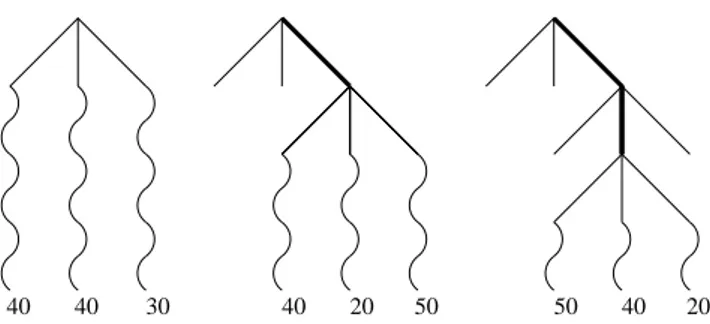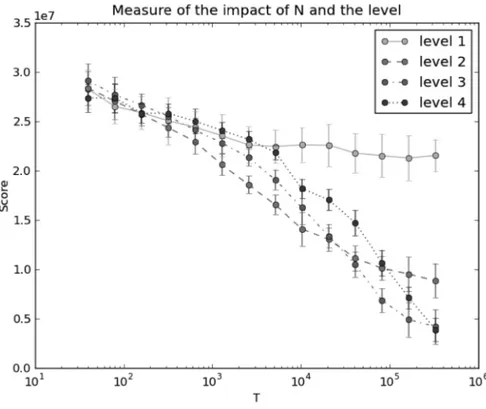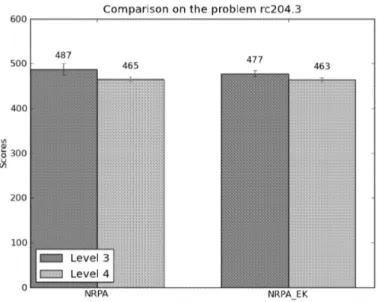Application of the Nested Rollout Policy Adaptation Algorithm to the Traveling Salesman Problem with Time Windows
Texte intégral
Figure



![Table 1. Results on all problems from the set from Potvin and Bengio [11]. First Column is the problem, second column the number of nodes, third column the best score found in [9], fourth column the best score found by the NMC algorithm with heuristics fro](https://thumb-eu.123doks.com/thumbv2/123doknet/2475865.50082/13.892.254.673.254.795/results-problems-potvin-bengio-column-problem-algorithm-heuristics.webp)
Documents relatifs
A branch-and-cut algorithm for the generalized traveling salesman problem with time windows.. Yuan Yuan, Diego Cattaruzza, Maxime Ogier,
Other variants of the maximum traveling salesman problem that have been considered are among others: the maximum symmetric traveling salesman problem (MAX TSP), in which the
This hierarchical objective function, called Solomon’s objective in the sequel, is unusual in vehicle routing: for instance, most articles on the VRP minimize the total distance
A NEW HEURISTIC FOR THE TRAVELING SALESMAN PROBLEM 251 Though simulated annealing [4] gives good results, it seems that the best heuristic for the symmetrie TSP is the one of Lin
The nonexistence of a tour with exactly two endpoints at distance 2 not connected by the tour can be shown by a similar case analysis as in the proof of Lemma 3.6 (c). The
We first prove that the minimum and maximum traveling salesman prob- lems, their metric versions as well as some versions defined on parameterized triangle inequalities
[12] Tristan Cazenave and Fabien Teytaud, ‘Application of the nested rollout policy adaptation algorithm to the traveling salesman problem with time windows’, in Learning
We suppose that we know that the solutions of the planar isoperimetric problem are circles. We consider a very old variant of this problem called Dido’s problem [18]. It is related